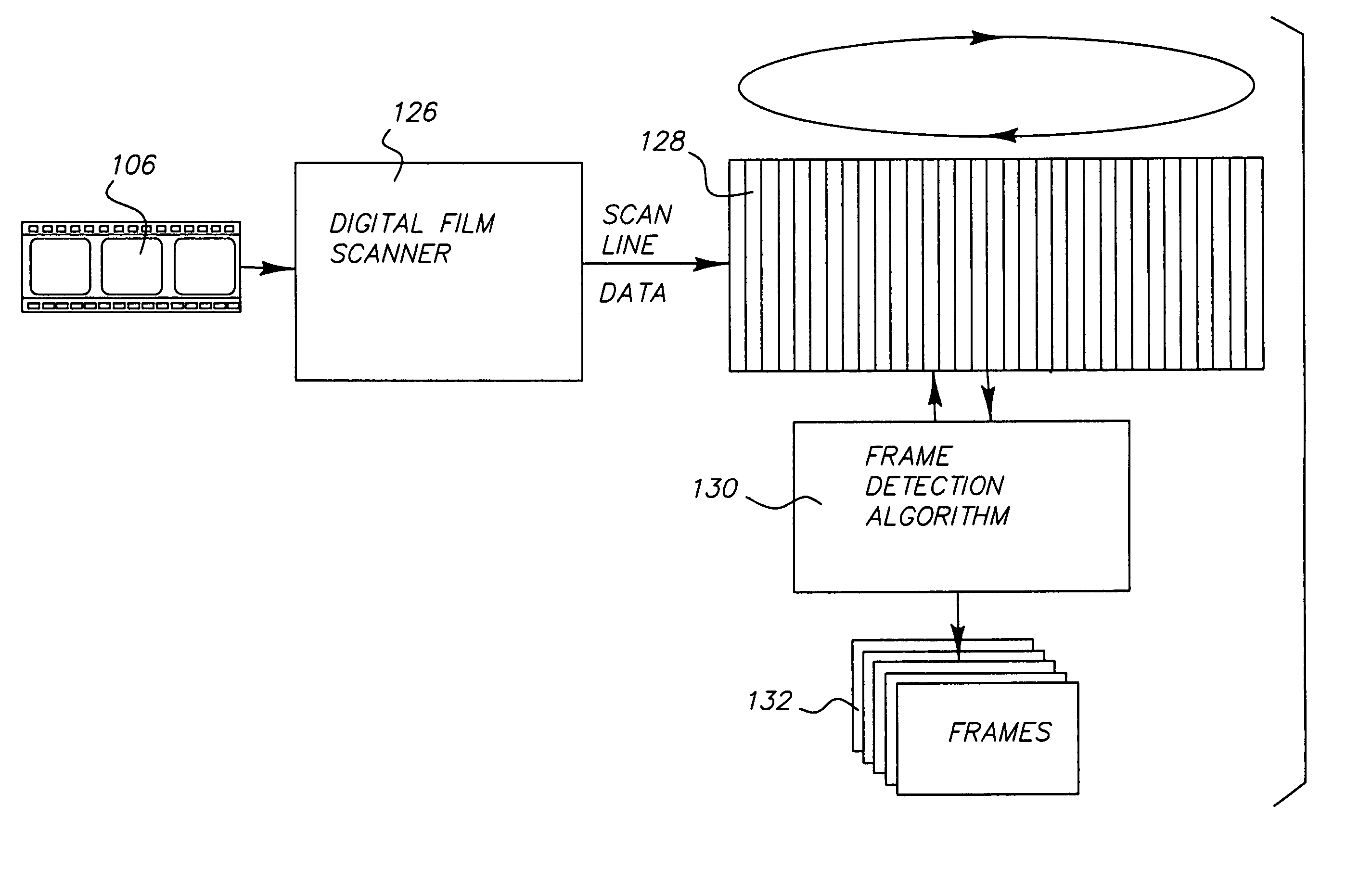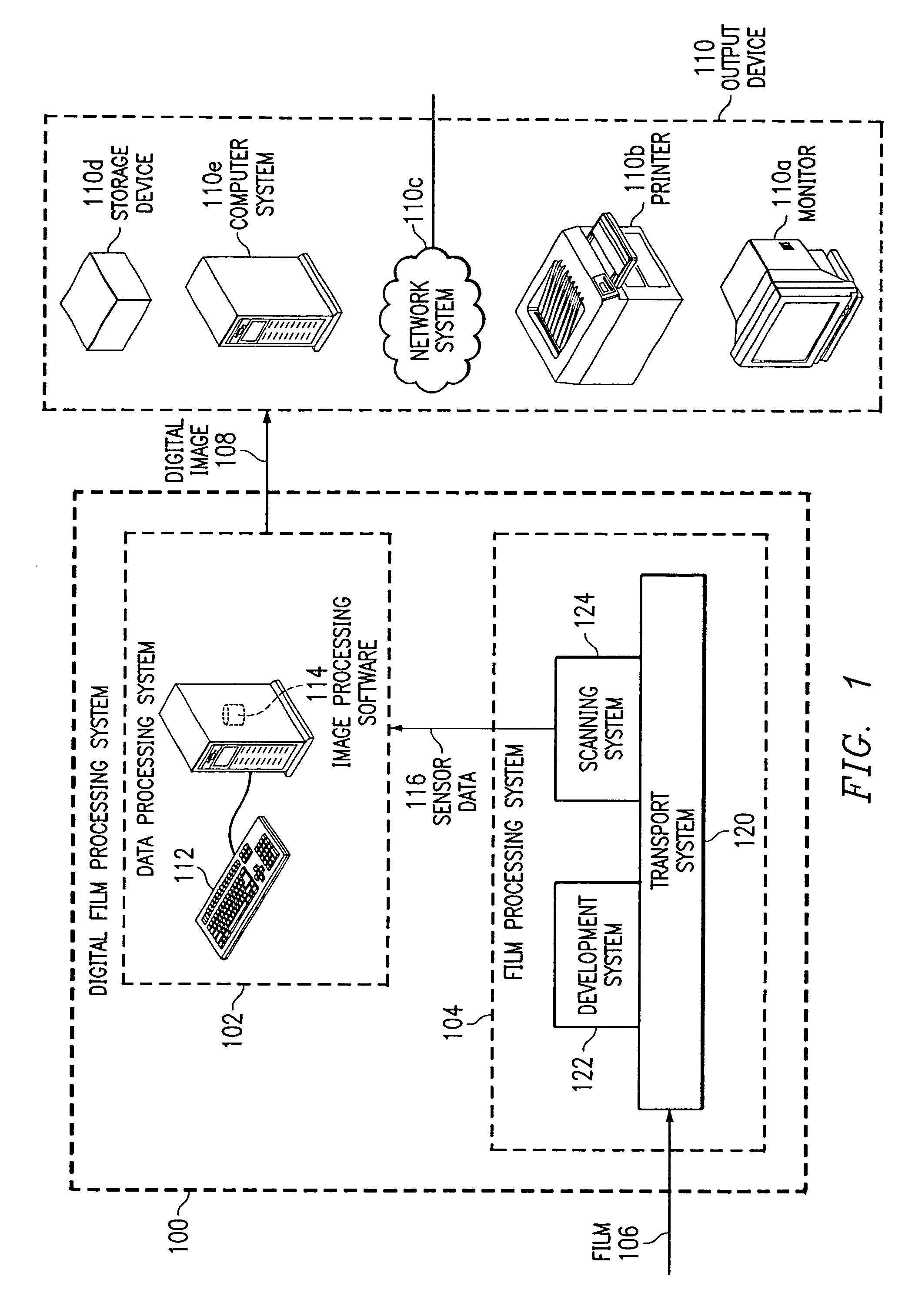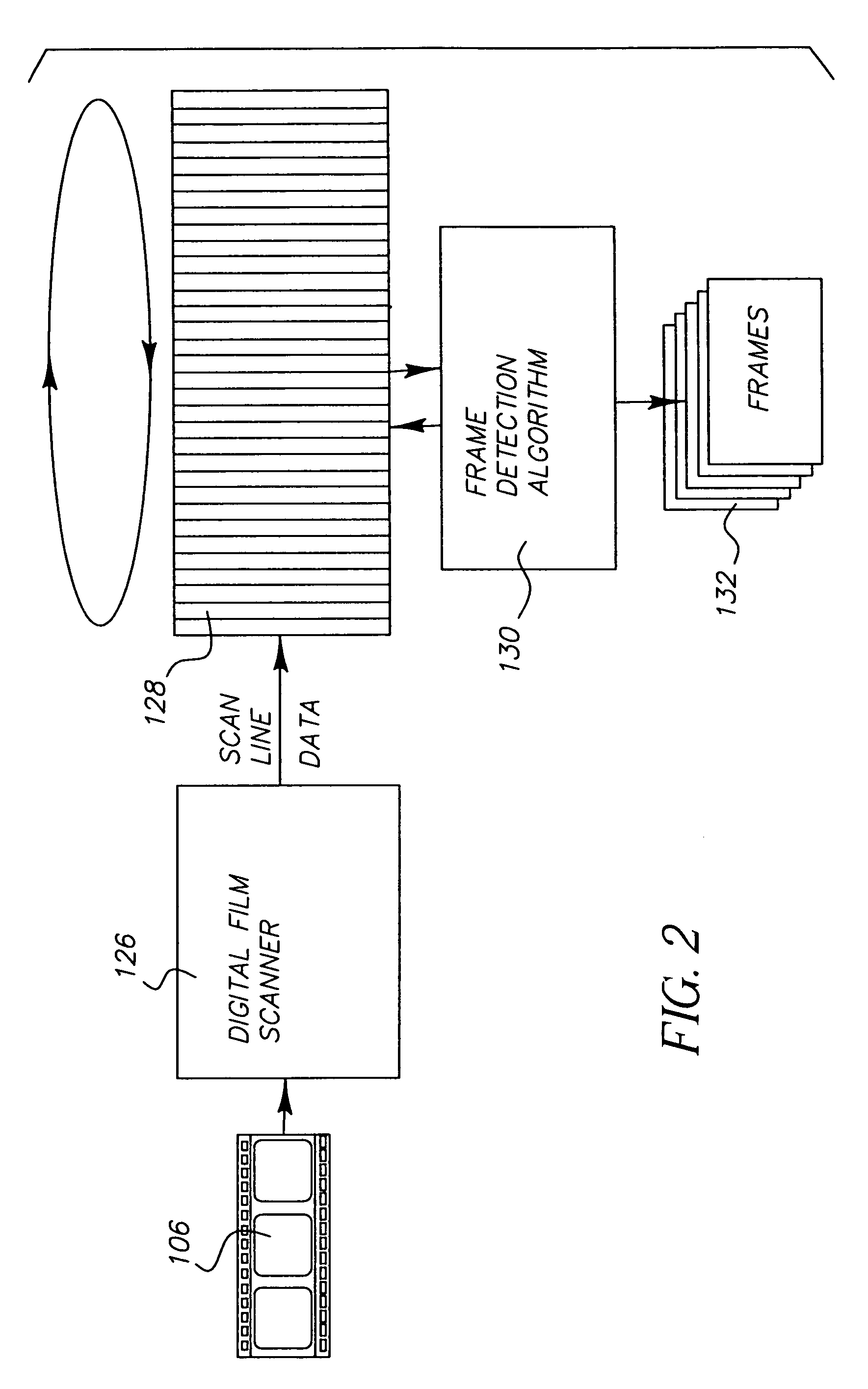Real time frame detection in a film scanner
a real-time frame and film scanner technology, applied in the field of frame detection, can solve the problems of destroying the image, requiring additional time and/or hardware, and affecting the usefulness of the film, so as to improve the use effect, simplify the hardware, and shorten the waiting period
- Summary
- Abstract
- Description
- Claims
- Application Information
AI Technical Summary
Benefits of technology
Problems solved by technology
Method used
Image
Examples
Embodiment Construction
[0015] Before describing in detail the particular image frame detection in accordance with the present invention, it should be observed that the present invention resides primarily in what is effectively a prescribed augmentation of the image scanning control software employed by the control processor which operates the film scanning mechanism at the front end of a digital image processing system, and not in the details of the hardware employed to scan the film. Accordingly, the structure, control and arrangement of conventional components and signal processing circuitry of which such a system is comprised have been illustrated in the drawings by readily understandable block diagrams which show only those specific details that are pertinent to the present invention, so as not to obscure the disclosure with structural details which will be readily apparent to those skilled in the art having the benefit of the description herein. Thus, the block diagram illustrations of the figures do...
PUM
 Login to View More
Login to View More Abstract
Description
Claims
Application Information
 Login to View More
Login to View More - R&D
- Intellectual Property
- Life Sciences
- Materials
- Tech Scout
- Unparalleled Data Quality
- Higher Quality Content
- 60% Fewer Hallucinations
Browse by: Latest US Patents, China's latest patents, Technical Efficacy Thesaurus, Application Domain, Technology Topic, Popular Technical Reports.
© 2025 PatSnap. All rights reserved.Legal|Privacy policy|Modern Slavery Act Transparency Statement|Sitemap|About US| Contact US: help@patsnap.com



